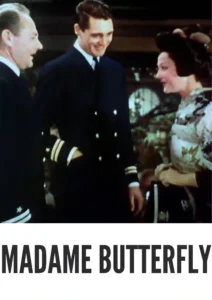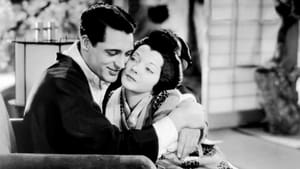Contact: info@alwanfilm.com
Video Sources 0 Views
- Madame Butterfly


Synopsis
Table of Contents
ToggleReview: Madame Butterfly 1932 Colorized – A Captivating Tale of Love and Sacrifice

Introduction
“Madame Butterfly” (1932) stands as a poignant reminder of the enduring power of love and the sacrifices we make in its name. In this article, we’ll explore the significance of this timeless classic and its impact on audiences, as well as delve into the nuances of its portrayal of love and sacrifice.
Check The Full Colorized Movies List
Check Our Colorized Movies Trailer Channel
Understanding Madame Butterfly 1932 Colorized: Director, Cast, and Genre
Directed by the visionary Josef von Sternberg, “Madame Butterfly” (1932) showcases his talent for crafting visually stunning and emotionally resonant films. The cast features luminaries such as Sylvia Sidney and Cary Grant, whose performances breathe life into the iconic characters of Cio-Cio San and Lieutenant Pinkerton. Blending elements of romance, drama, and tragedy, “Madame Butterfly” (1932) transports viewers to a world of passion, betrayal, and ultimately, redemption.
Exploring the World of Madame Butterfly 1932 Colorized: Plot and Characters
At its core, “Madame Butterfly” (1932) tells the story of a young Japanese woman named Cio-Cio San, who falls in love with an American naval officer, Lieutenant Pinkerton. Despite their vastly different backgrounds and the disapproval of society, they embark on a passionate love affair that ultimately leads to heartbreak and tragedy. As Cio-Cio San’s unwavering devotion is put to the ultimate test, viewers are drawn into a world of emotional turmoil and moral complexity.
The Art of Film Colorization
Film colorization serves as a transformative tool that can breathe new life into classic movies, allowing audiences to experience them in a fresh and exciting way. By adding color to black and white films, colorization enhances the visual appeal of these timeless classics and introduces them to new generations of viewers who may be unfamiliar with their cinematic brilliance.
Early Colored Films: A Brief History
The history of colored films dates back to the early days of cinema, with filmmakers experimenting with various techniques to add color to their creations. From hand-tinted frames to early Technicolor processes, the evolution of colored film has been marked by innovation and creativity, paving the way for the development of modern colorization techniques that continue to captivate audiences to this day.
Madame Butterfly 1932 and Its Early Colored Version
The decision to release “Madame Butterfly” (1932) in a colorized format was met with both excitement and apprehension. While some welcomed the opportunity to experience the film in vibrant color, others expressed concerns about the potential impact on its visual aesthetic. Nevertheless, the early colored version of “Madame Butterfly” (1932) offers viewers a fresh perspective on the timeless tale of love and sacrifice, enhancing its emotional resonance and captivating audiences with its luminous beauty.
The Debate Over Film Colorization
The debate over film colorization remains a contentious issue in the world of cinema, with proponents arguing that it revitalizes classic movies for modern audiences, while detractors maintain that it compromises the artistic integrity of the original work. As filmmakers and audiences continue to grapple with the pros and cons of colorization, the debate rages on, with no clear resolution in sight.
Examining Madame Butterfly 1932 as an Early Colored Film
As with any colorized classic, the impact of colorization on “Madame Butterfly” (1932) is a matter of personal interpretation. Some may argue that it enhances the film’s visual appeal and immerses viewers in its world, while others may feel that it detracts from the stark beauty of the original black and white version. Regardless of one’s stance on the issue, there’s no denying the enduring power of “Madame Butterfly” (1932) as a timeless masterpiece that continues to captivate audiences with its unforgettable story and unforgettable characters.
Influence and Legacy: Madame Butterfly 1932 Colorized’s Impact on Cinema
“Madame Butterfly” (1932) has left an indelible mark on the world of cinema, inspiring countless filmmakers and captivating audiences with its timeless tale of love and sacrifice. From its breathtaking performances to its hauntingly beautiful score, the film continues to resonate with viewers of all ages, reaffirming its status as a beloved classic of the romantic drama genre.
Director’s Cinematic Legacy: Beyond Madame Butterfly 1932 Colorized
Josef von Sternberg’s influence extends far beyond “Madame Butterfly” (1932), with a diverse body of work that continues to captivate audiences around the globe. From “The Blue Angel” to “Morocco,” von Sternberg’s films are celebrated for their visual style, emotional depth, and profound exploration of the human condition. Through his groundbreaking work, von Sternberg has left an indelible imprint on the world of cinema, inspiring generations of filmmakers to follow in his footsteps.
Themes Explored in Madame Butterfly 1932 Colorized
“Madame Butterfly” (1932) explores a myriad of themes, from the transformative power of love to the devastating consequences of betrayal and loss. Through its richly drawn characters and evocative storytelling, the film invites viewers to ponder the complexities of human relationships and the enduring strength of the human spirit. As audiences immerse themselves in the world of “Madame Butterfly” (1932), they are reminded of the universal truths that bind us together and the timeless beauty of love in all its forms.
Reception and Controversy Surrounding Madame Butterfly 1932 Colorized
Upon its release, “Madame Butterfly” (1932) received widespread critical acclaim, with many praising its hauntingly beautiful cinematography, stirring performances, and emotionally resonant storytelling. However, the decision to release the film in a colorized format sparked debate among purists, reigniting the age-old discussion surrounding film preservation and artistic integrity. Despite the controversy, “Madame Butterfly” (1932) remains a beloved classic that continues to captivate audiences with its timeless tale of love and sacrifice.
Where to Watch Madame Butterfly 1932 Colorized Online
For those eager to experience the timeless magic of “Madame Butterfly” (1932), the film is readily available on popular streaming platforms such as Netflix, Amazon Prime, and Hulu. Whether you choose to watch it in its original black and white format or the early colored version, “Madame Butterfly” (1932) promises to transport you to a world of passion, betrayal, and ultimately, redemption.
FAQs About Madame Butterfly 1932 Colorized
Q: Is “Madame Butterfly” (1932) based on a true story? A: No, “Madame Butterfly” (1932) is a fictional tale inspired by Giacomo Puccini’s renowned opera of the same name. While the film incorporates elements of Japanese culture and history, its characters and plot are products of the screenwriter’s imagination rather than historical documentation.
Q: Who are the main actors in “Madame Butterfly” (1932)? A: “Madame Butterfly” (1932) features a talented cast led by Sylvia Sidney in the titular role of Cio-Cio San and Cary Grant as Lieutenant Pinkerton. Their on-screen chemistry and compelling performances bring depth and authenticity to the timeless tale of love and sacrifice.
Q: What awards did “Madame Butterfly” (1932) win? A: While “Madame Butterfly” (1932) did not win any major awards, it received critical acclaim for its stunning cinematography, evocative score, and powerful performances.
Q: Why was “Madame Butterfly” (1932) released in a colorized format? A: The decision to release “Madame Butterfly” (1932) in color was made to introduce the film to a new generation of viewers and enhance its visual appeal for modern audiences. While the choice to colorize the film sparked debate among purists, it ultimately allowed “Madame Butterfly” (1932) to reach a wider audience and ensure its continued relevance in the annals of cinematic history.
Conclusion
As we reflect on the enduring legacy of “Madame Butterfly” (1932), let us celebrate its status as a timeless classic that continues to captivate audiences with its haunting beauty, stirring performances, and timeless themes. Whether viewed in its original black and white format or the early colored version, “Madame Butterfly” (1932) remains a shining example of the power of cinema to inspire, uplift, and provoke thought.













